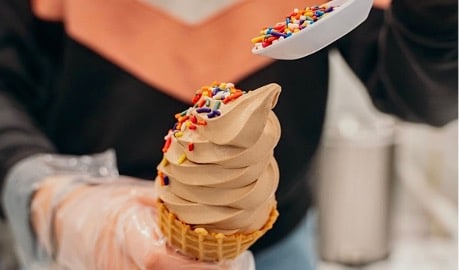Milk Fat
Milk Solids
Sweeteners
Stabilizers
Emulsifiers
Water
Flavorings
Lastly, flavorings are used in ice cream bases to create different tastes. These flavors can be natural or artificial, such as fruits, nuts, or syrups. Flavorings provide an easy way to create different flavors of soft serve that come out consistent every time. While flavoring ice cream and soft serve, it’s important to use the correct proportions so the flavor is not too mild or too intense.
So How Is Soft Serve Actually Made?
Once you have purchased your pre-made soft serve mix or made your own with the ingredients listed above, it’s time to turn it into soft serve. Soft serve machines work by agitating the soft serve mixture and freezing it simultaneously. While the machine is spinning and freezing your mix, air is also incorporated into the process. The air that is added to soft serve, known as overrun, increases the overall volume of the product, and gives the ice cream its creamy and fluffy texture. Soft serve machines should always maintain a freezing cylinder temperature of about 17-22 degrees Fahrenheit and a hopper temperature of under 40 degrees to ensure the ice cream remains fresh and has a good consistency.
Now that we know the ingredients used in soft serve and the process it goes through to become the delicious treat that we are all so familiar with, it’s your turn to give it a shot. Whether you are buying a pre-made mix and adding your own spin to it, or creating a mixture from scratch, the process that happens inside the machine remains the same, and so does the tastiness of America’s favorite dessert.
